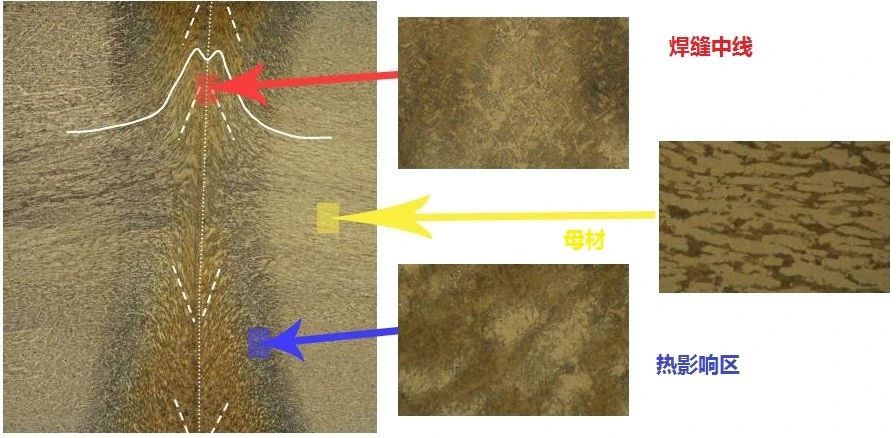The significance of studying the heat affected zone of the used roll forming machine welding
- Sort:Information
- Auth:
- Source:
- Release time:2022-05-05 11:30
- Pvs:
【概要描述】When used roll forming machine is used to manufacture a welded pipe, a complete high-frequency welded pipe weld will appear, which is composed of a fusion zone and a heat-affected zone. The fusion zone is a narrow weld.
The significance of studying the heat affected zone of the used roll forming machine welding
【概要描述】When used roll forming machine is used to manufacture a welded pipe, a complete high-frequency welded pipe weld will appear, which is composed of a fusion zone and a heat-affected zone. The fusion zone is a narrow weld.
- Sort:Information
- Auth:
- Source:
- Release time:2022-05-05 11:30
- Pvs:
When used roll forming machine is used to manufacture a welded pipe, a complete high-frequency welded pipe weld will appear, which is composed of a fusion zone and a heat-affected zone. The fusion zone is a narrow weld.
Welding theory and practice point out that the quality of welding depends not only on the weld, but also on the welding heat-affected zone; sometimes the problems in the heat-affected zone are more complex than the weld. It is especially obvious when it comes to steel pipes. Many cases of failed oil pipes and high-strength alloy steel pipes have proved that the problem is often in the heat affected zone. Therefore, it is of great significance to study the changes in the structure and properties of the tube blank that are affected by the heat of the used roll forming machine, which is of great significance to the strength of the welded seam and the quality of the welded tube.


Microstructure of heat affected zone of low carbon equivalent welded pipe
The structure and morphology of the welding heat-affected zone is closely related to the carbon equivalent of the steel. The welding heat-affected zone of the used roll forming machine belongs to the low-carbon equivalent category. Overheating zone, Phase change recrystallization zone,Incomplete recrystallization zone, recrystallization zone and aging embrittlement zone.
(1) Overheating zone
The temperature is between 1400 and 1100 °C, and the closer it is to the fusion zone, the higher the temperature; it is manifested that some refractory points such as carbides and oxides melt into austenite at the solidus, and the austenite grains are coarse. Coarse austenite is easy to form superheated Widmanite structure during cooling, resulting in reduced toughness.
(2) Phase change recrystallization zone
The temperature is between 1100~850°C, above the Ac3 line; the recrystallization phase transition occurs when heated (P+F transforms into A, and A transforms into P+F during cooling), so that the grains are refined; equivalent to low carbon The normalized structure of steel has good comprehensive mechanical properties.
(3) Incomplete recrystallization zone
When the temperature is between 850 and 700 °C, only part of the metal in this region undergoes recrystallization phase transformation; it is the coexistence and mixing of the original ferrite coarse grain and fine grain region, and the mechanical properties are poor.
(4) Recrystallization zone
When the temperature is between 700 and 500°C, the internal structure of the metal does not change after heating, only the shape of the grain changes; it is an equiaxed ferrite grain, the strength and hardness are lower than that of the base metal, and the plasticity and toughness are improved. is the softening zone of the weld.
(5) Aging embrittlement zone
When the temperature is between 500°C and room temperature, the metal structure is close to the base metal; the longer the storage time, the closer the structure and properties are to the base metal.
Through the analysis of the structure of the welding heat affected zone of the used roll forming machine, not only can the welding process be better improved, but also it is helpful to understand the formation and distribution of welding stress on the welded pipe.
More News

Time of issue : 2023-10-31

Time of issue : 2023-10-28

Time of issue : 2023-10-25

Time of issue : 2023-10-22
Wechat: 13392281699
Email: zty@usedpipemill.com
Company address:No. A99, East Lecong Avenue, Lecong Town, Foshan City, Guangdong Province
Recommendation
Online Inquiry
LINK
Contact Us
Tel (wechat): 13336487288
Wechat:+86 13336487288
WhatsApp:+86 13336487288
Email: zty@usedpipemill.com
Address: No. A99, Lecong Avenue East, Lecong Town, Foshan City, Guangdong Province










